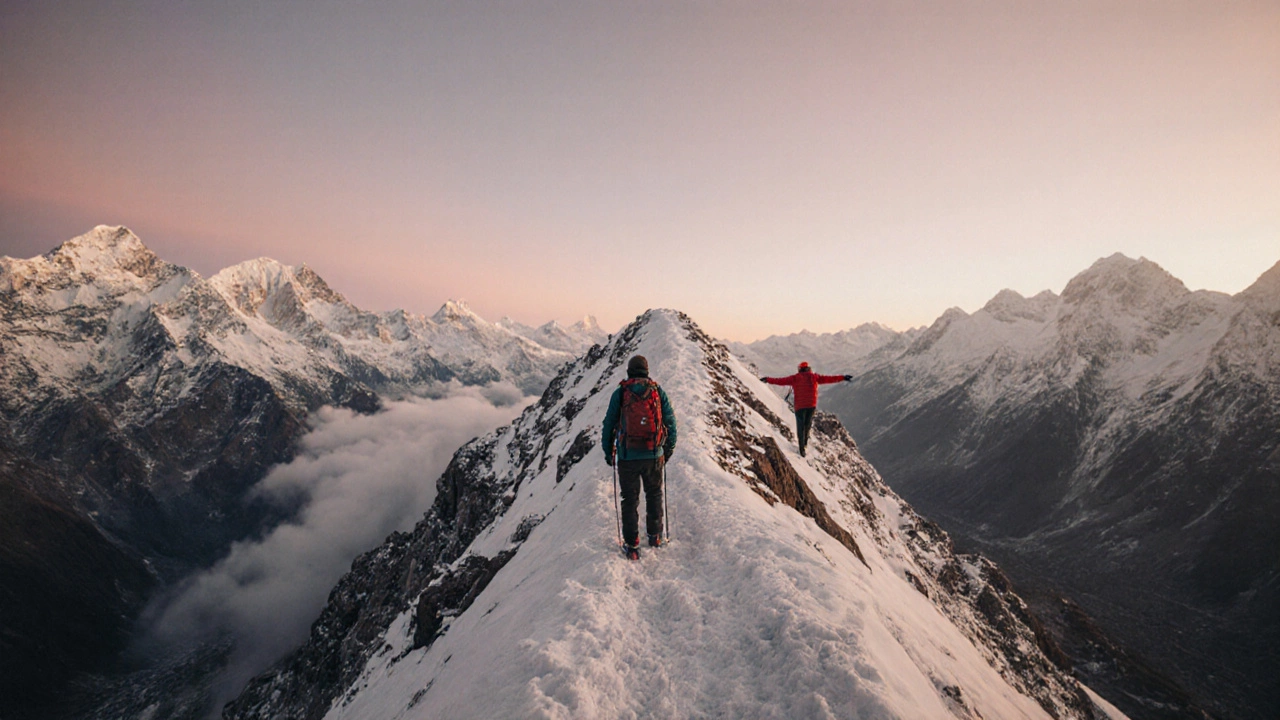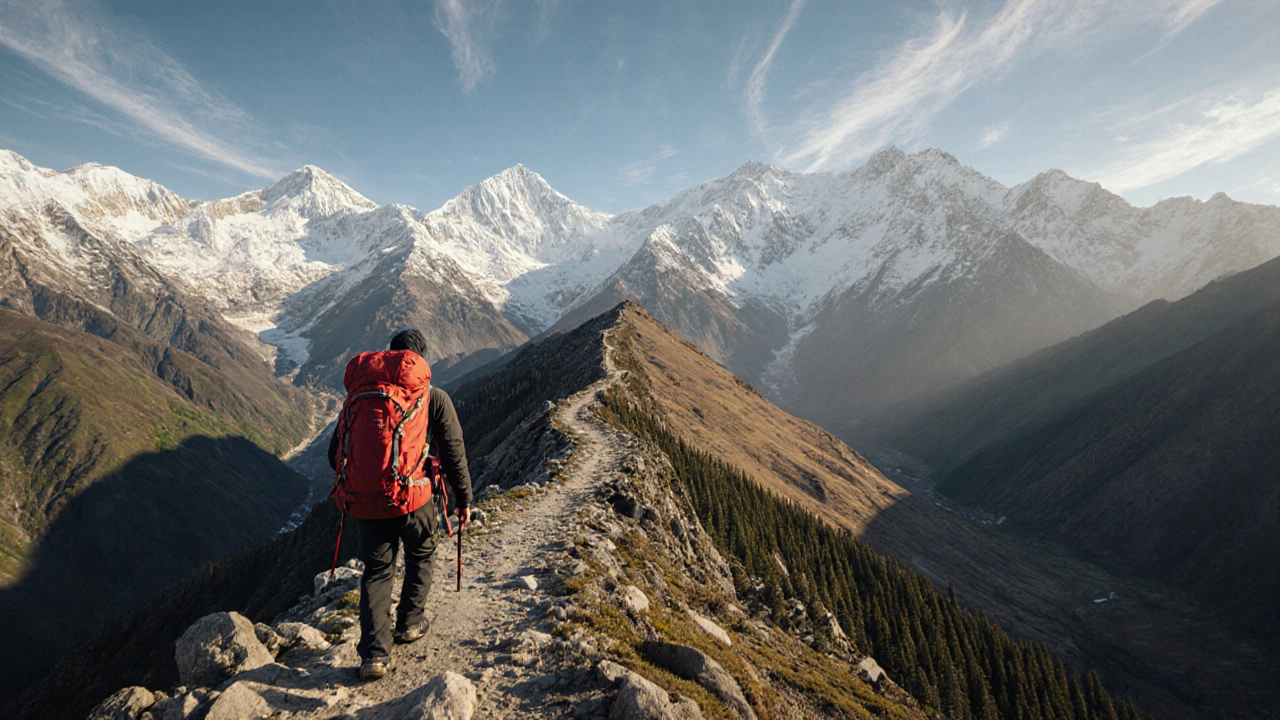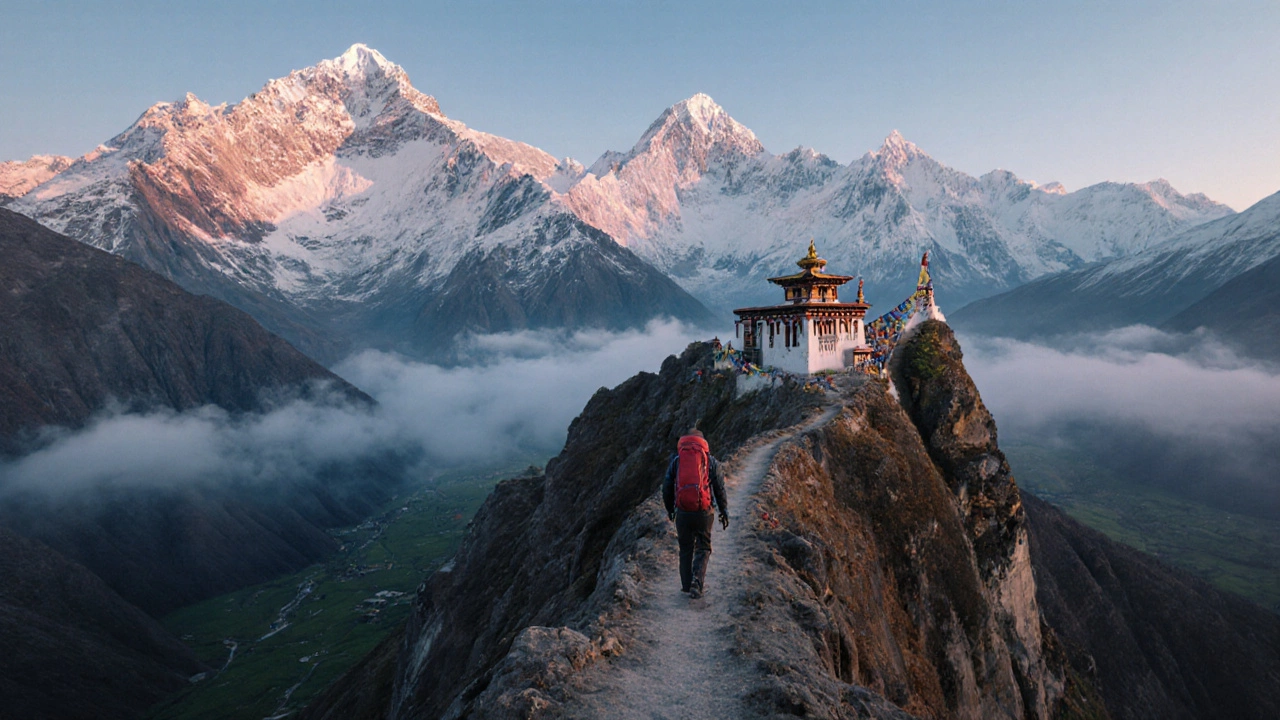Himalayan Trekking: Best Trails, Tips, and What to Expect
When you think of Himalayan trekking, a high-altitude walking journey through the world’s tallest mountain range, often involving multi-day treks in remote, rugged terrain. Also known as mountain trekking, it’s not just hiking—it’s a full immersion into raw nature, cultural villages, and skies so clear you can see the stars like never before. Unlike city walks or coastal trails, Himalayan trekking demands respect for altitude, weather, and terrain. You’re not just walking—you’re moving through landscapes shaped by glaciers, prayer flags, and centuries of spiritual tradition.
This kind of trekking isn’t just about fitness. It’s about preparation. You need the right gear—not just boots, but layers that handle sudden cold, rain, and sun. You need to understand how your body reacts above 3,000 meters. Many first-timers underestimate how fast altitude sickness can hit. It’s not about being the strongest person in the group—it’s about pacing, hydrating, and listening to your body. And yes, you’ll pass through villages where tea is served with butter, monks chant in stone monasteries, and the only Wi-Fi is the view.
Some of the most famous routes like the Kedarkantha Trek, a moderate 4- to 5-day trail in Uttarakhand offering snow-covered peaks and starlit campsites, or the Hampta Pass, a high-altitude crossing in Himachal Pradesh that shifts from green valleys to barren lunar-like ridges, are perfect for beginners with decent stamina. More experienced trekkers head to the Roopkund Trek, famous for its mysterious skeleton lake and steep climbs above 5,000 meters. Each route has its own rhythm, its own challenges, and its own rewards.
What ties these trails together? They’re all part of a larger system—India’s Himalayas aren’t just mountains. They’re living ecosystems, spiritual zones, and home to communities that have lived in harmony with these peaks for generations. That’s why eco-friendly trekking matters. Trash left behind doesn’t just spoil the view—it harms wildlife and water sources. Choosing local guides, carrying reusable bottles, and sticking to marked trails aren’t just good practices—they’re necessary ones.
You won’t find luxury here. No spas, no room service. But you’ll find silence so deep it feels like a gift. You’ll wake up to snow on your tent, drink tea brewed over a wood fire, and watch the sun rise over Nanda Devi or Bandarpunch while the world below is still asleep. That’s the real draw of Himalayan trekking—not the Instagram shot, but the quiet moment when you realize you’re small, but perfectly alive.
Below, you’ll find real stories from people who’ve walked these trails—what they packed, what surprised them, what they wish they’d known before they started. Whether you’re planning your first trek or just daydreaming about the mountains, these posts give you the practical, no-fluff truth.


